Mom’s Unexpected Gratitude, Life Lessons After Baby’s Stillbirth
It’s been nearly nine years, and Sunita Param still mourns her daughter Soraya — stillborn at 38 weeks — every day.
“I think about it all the time,” says the Los Angeles mom in a candid interview with Yahoo Parenting about the profound pain of losing her firstborn — and the unexpected gratitude that she’s developed since that dark time — as part of Yahoo Parenting’s “What It’s Like” original video series during this Pregnancy and Infant Loss Awareness Month.
“For so long, I couldn’t stop thinking about it,” she explains. “I mean — literally. I would be in yoga class trying to clear out the cobwebs and heal my heart and my brain … and the words that would come into my head would be … ‘My baby is dead.’ Now it’s just sort of a part of me.” But it’s become a positive part of her. The experience “taught me that your life can change in an instant, good or bad,” she says. “And I think I’m just more appreciative of everything.”
STORY: Powerful Photo of Moms and Their Babies Inspires Without Saying a Word
As the anniversary of Soraya’s Nov. 3, 2006, stillbirth approaches, Param shares how learning that she’s not alone has helped. Stillbirth occurs in about 1 percent of all pregnancies, according to the Centers for Disease Control and Prevention. And while that may sound like a relatively small number, that figure totals up to about 24,000 babies each year — more than 10 times as many deaths as Sudden Infant Death Syndrome (SIDS) claims in the U.S. “It was really important for me to find other women who experienced what I experienced,” she adds, “[because] it’s so hard to wrap your head around.”
STORY: What Most People Don’t Know About Miscarriages
Param’s pregnancy was “perfect,” she says. The piano teacher, 44, wed to actor Jason Olazabal, 42, explains, “Every doctor’s visit was amazing. I felt great. I looked great. When I went in for my 38-week checkup, I was hoping that the doctor would say that I was effaced and dilated and ready to give birth. But what happened was, she couldn’t find a heartbeat. The baby had … died.”
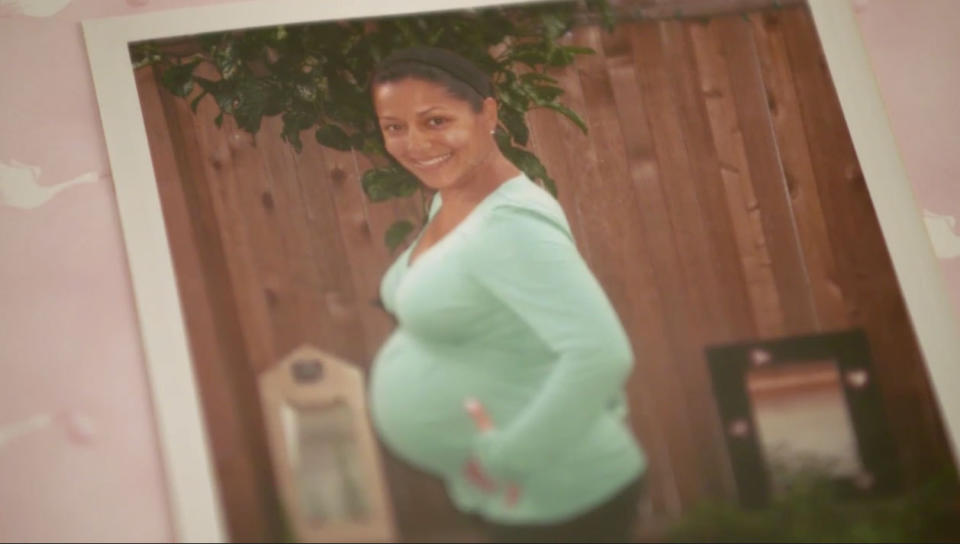
Photo: Yahoo Parenting
“It’s truly the most unimaginable horror,” she reveals. “All of these amazing plans that you have laid out blow up in your face. I mean, it’s like your own terrorist attack. It comes out of nowhere.” Param recalls that she knew there was a chapter at the end of What to Expect When You’re Expecting about stillbirth but admits, “Why would I ever read that chapter? You don’t think it’s even a possibility.” Param and her husband, who was with her at the appointment, were both “in shock,” she says.
A follow-up ultrasound confirmed that Soraya was gone, and Param says, “I remember thinking, ‘Well, just get her out. OK, C-section. Let’s just get her out,’ and the doctor on call said no.” Wanting Param’s body “to be preserved for future pregnancies,” she says she was told, the mother has to go into labor and give birth vaginally.
“We made phone calls to everybody and told them what was happening,” she remembers, and the next day the couple went to the hospital where Param was induced and endured a 21-hour delivery. “Through the actual last moments of the labor, I thought, ‘Maybe she’ll come out crying. Maybe this is a mistake.’” But after Soraya was born, Param says, the room was completely quiet. “Normally, there’s so much sound from the woman who’s giving birth, and the baby crying, and it was just, like, silence.”
Her daughter “was beautiful,” she says. “I mean, she literally was perfect. And I was so scared because I was afraid of what I was going to see … [but] the nurse really encouraged us to hold her and spend time with her. I am eternally grateful for that.” The parents took pictures with their daughter and say that to this day they treasure every image. “It’s a difficult thing to sort of grasp,” Param explains. “You know, we’re waiting for this baby, and then there’s a baby — but there’s no baby. So the photographs were really important.”
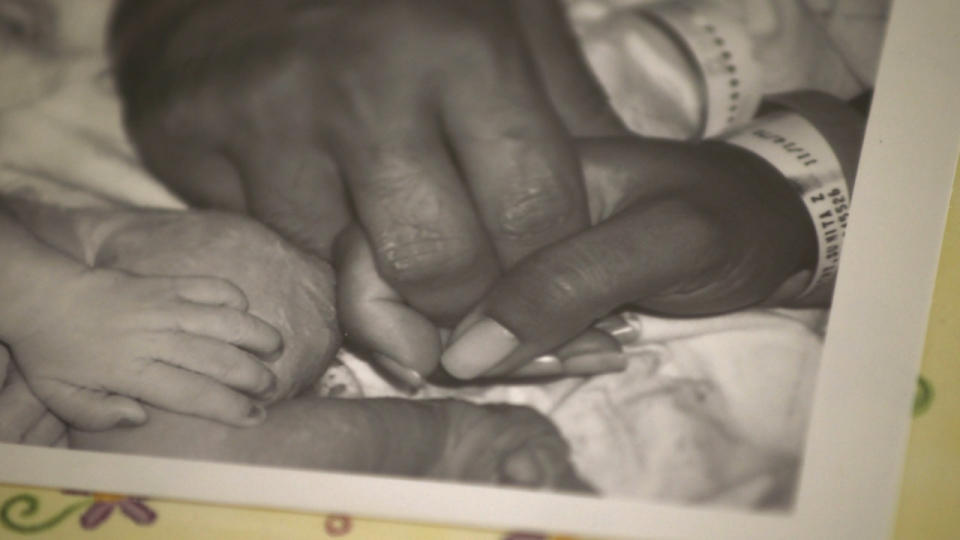
Photo: Yahoo Parenting
She regrets not taking more. “I wish I had bathed her and dressed her and done all of those things,” says Param. “These are ritualistic things that are really, really important [because] in that moment, in that time with her, I understood why we have funerals. Why we have all those … things that we do when people die. We need them as the survivors.”
Simply leaving the maternity ward without a baby, she explains, is excruciating. “The nurses on the floor did their very best when I exited the hospital the next day in a wheelchair, with no baby, to make it as easy and smooth as possible, so that I wouldn’t hear any other babies, wouldn’t see any other babies,” she says, “but it was very difficult.” Ditto driving home with a car seat and returning to a house full of infant clothes. Param says her mother and husband put everything away one day when she stepped out, but it didn’t make things easier in the end. “I kind of wished they didn’t because I needed that,” she explains. “Because then I came home and there was nothing.”
To get through those rough days, Param says, she sought counseling. “I couldn’t get into a support group fast enough,” recalls the mom, who joined the foundation Mothers in Support and Sympathy. “I needed to hear, ‘You’re not going to be in the depths of despair forever. There is a light at the end of the tunnel. You will be OK one day. For now, just put one foot in front of the other and it’ll be OK one day.’”
And while she admits that in the months following their loss, “I was very angry,” Param is glad to say that her marriage didn’t suffer. “Our relationship through this tragedy was strengthened, for sure, so many times,” she says. “Particularly in the loss of a child, the relationship disintegrates, which is a whole other world of hurt and loss, and I’m so grateful that that was not our story.”
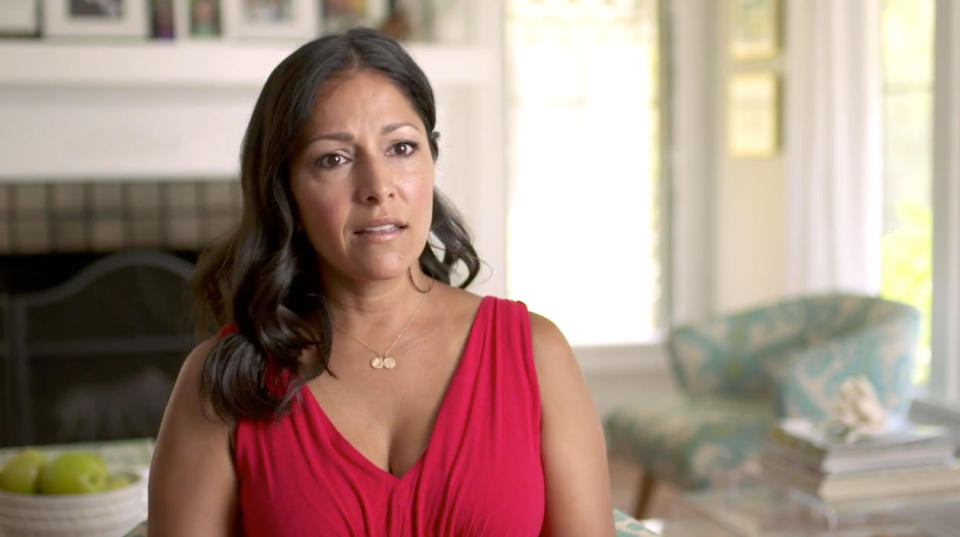
Sunita Param (Photo: Yahoo Parenting)
Friendships, however, were another tale. “I did have some friends who didn’t quite know what to do, and they maybe weren’t as present physically as we needed them to be,” she says. “But to be fair, we didn’t really know what we needed. And we didn’t know how to ask for what we needed. Asking for help was a really hard thing for us. That’s a huge lesson that we’ve learned through all of this, asking, being able to ask for help.”
Experiencing a stillborn birth can be an alienating experience, she says. “I think people sort of get, ‘Oh, dead baby,’ but they’re not really sure what it is.” Yet Param was lucky. She received an outpouring of support as “people came out of the woodwork,” she recalls. “I cannot tell you how many people said, ‘This happened to my sister. This happened to my best friend.’ The same story. The same thing. It happens more than you think. But nobody wants to talk about that.”
Breaking the silence, for her, helped a lot. “Certainly, we don’t want to scare pregnant women and families, but I do feel like people need to know that this is a real possibility,” she insists. “The worst thing you could do is not acknowledge it, not say anything. [Yet, unfortunately, a lot of] times people can’t deal with the sadness. They can’t have that conversation.”
For a long time, sadness engulfed her, Param admits. “I am inherently a really optimistic person. And I lost that, but I’ve regained most of it back.” She’s found a new strength as well: “I am a lot more empathetic,” she proclaims. “And I’m way more grateful for the small moments, the nice moments.”
The biggest motivator in moving forward? Welcoming another beloved daughter, Lalita, now 7. “I was giving birth to Soraya, and I was like, “‘I need to get pregnant right now,’” says the mom. “It was about changing my story. It was about this thing didn’t happen. I needed to make it right.”
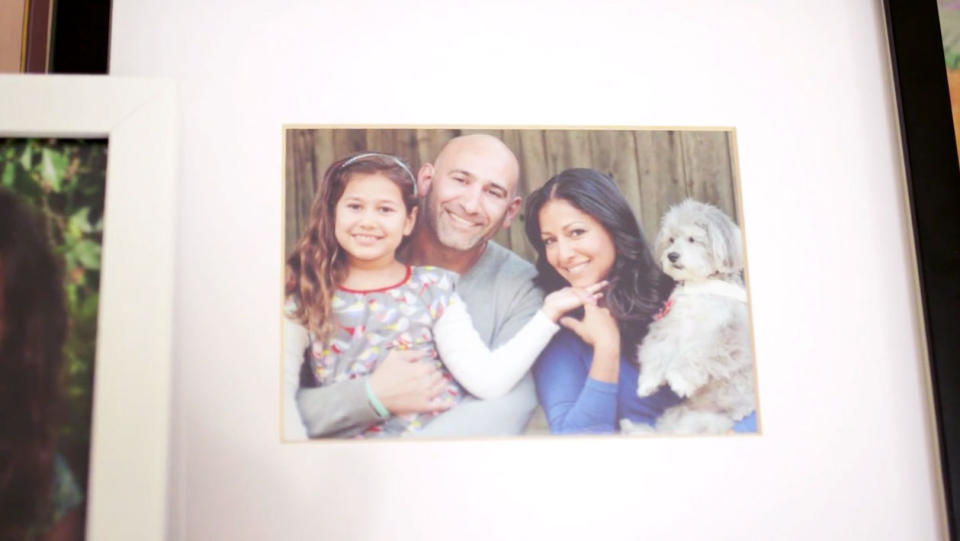
Param, right, her husband, Jason Olazabal, and daughter, Lalita. (Photo: Yahoo Parenting)
After miscarrying a child that she conceived two months after Soraya was stillborn, Param became pregnant with Lalita. “I was so afraid I was going to lose this baby again,” confesses the mom. “I think the entire world breathed a sigh of relief with our family when she was born, honestly. I know I certainly did.” Lalita and her late sister are 16 months apart.
Talking about Soraya’s birth “definitely is a healing thing for me, to acknowledge that this occurred,” she says. Not to mention, “having friends of yours and family members [posting notes on Facebook], ‘Thinking of you,’ or, ‘Sending love,’ that support is such a great thing.” As was making peace with the tragedy.
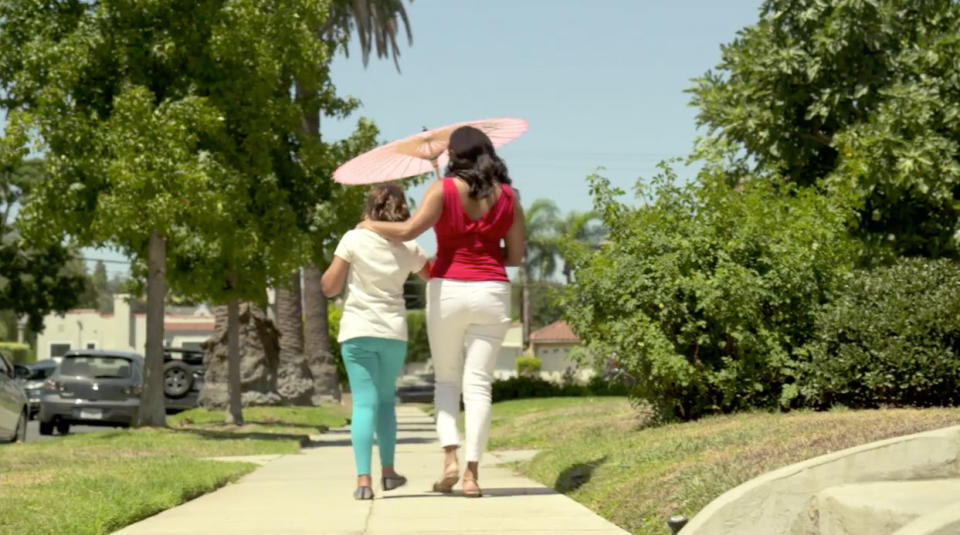
Param and her daughter, Lalita. (Photo: Yahoo Parenting).
“I didn’t blame myself,” Param reflects, “though there was a moment for a short period of time where I felt like my body had betrayed me, and I needed to know why [we lost Soraya]. But the sad truth about stillbirth is that in 60 percent of the cases, there is no known reason, even after an autopsy.” The couple had an autopsy performed on Soraya, and Param says, “We still didn’t know [why she died]. It’s not like the cord was wrapped around her neck. It just happened.”
The idea that brings them closure is a simple one, the mother says. It’s one that she still reminds herself of to this day: “She lived what life she was supposed to live.”
Please follow @YahooParenting on Facebook, Twitter, Instagram, and Pinterest. Have an interesting story to share about your family? Email us at YParenting (at) Yahoo.com.

